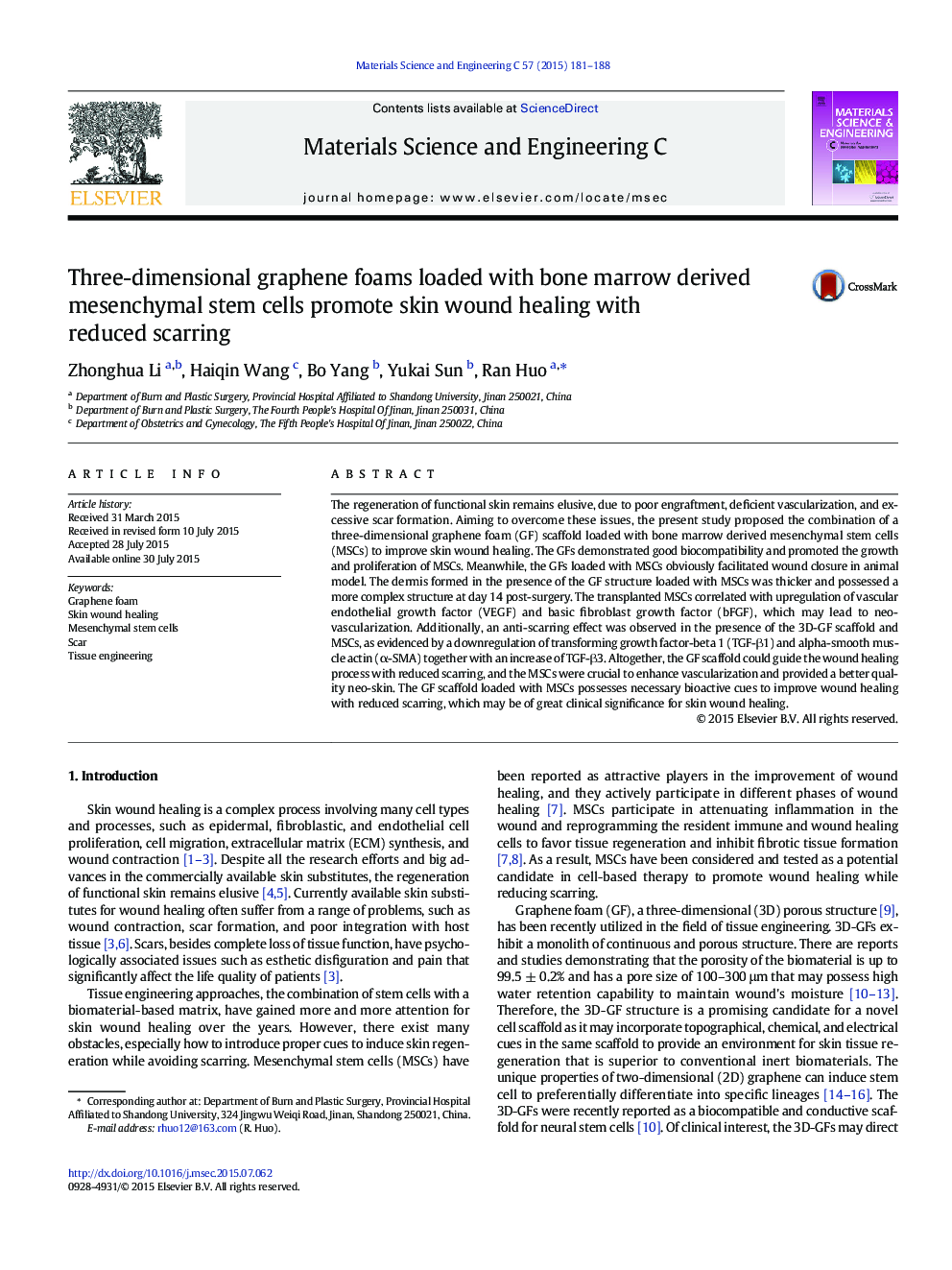| Article ID | Journal | Published Year | Pages | File Type |
|---|---|---|---|---|
| 7868688 | Materials Science and Engineering: C | 2015 | 8 Pages |
Abstract
The regeneration of functional skin remains elusive, due to poor engraftment, deficient vascularization, and excessive scar formation. Aiming to overcome these issues, the present study proposed the combination of a three-dimensional graphene foam (GF) scaffold loaded with bone marrow derived mesenchymal stem cells (MSCs) to improve skin wound healing. The GFs demonstrated good biocompatibility and promoted the growth and proliferation of MSCs. Meanwhile, the GFs loaded with MSCs obviously facilitated wound closure in animal model. The dermis formed in the presence of the GF structure loaded with MSCs was thicker and possessed a more complex structure at day 14 post-surgery. The transplanted MSCs correlated with upregulation of vascular endothelial growth factor (VEGF) and basic fibroblast growth factor (bFGF), which may lead to neo-vascularization. Additionally, an anti-scarring effect was observed in the presence of the 3D-GF scaffold and MSCs, as evidenced by a downregulation of transforming growth factor-beta 1 (TGF-β1) and alpha-smooth muscle actin (α-SMA) together with an increase of TGF-β3. Altogether, the GF scaffold could guide the wound healing process with reduced scarring, and the MSCs were crucial to enhance vascularization and provided a better quality neo-skin. The GF scaffold loaded with MSCs possesses necessary bioactive cues to improve wound healing with reduced scarring, which may be of great clinical significance for skin wound healing.
Related Topics
Physical Sciences and Engineering
Materials Science
Biomaterials
Authors
Zhonghua Li, Haiqin Wang, Bo Yang, Yukai Sun, Ran Huo,
